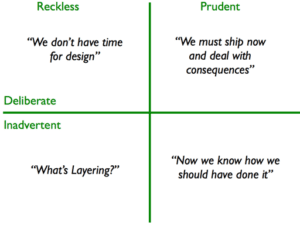First released way back in 1996, COBIT has already been around for quite a while. One reason why it never took off was because companies were never compelled to use it ? until now. Today, many CEOs and CIOs are finding it to be a vital tool for achieving SOX compliance in IT.
Thanks to SOX, COBIT (Control Objectives for Information and related Technology) is now one of the most widely accepted source of guidance among companies who have IT integrated with their accounting/financial systems. It has also gained general acceptability with third parties and regulators. But how did this happen?
Role of control frameworks in SOX compliance
You see, the Sarbanes-Oxley Act, despite having clearly manifested the urgency of establishing effective internal controls, does not provide a road map for you to follow nor does it specify a yardstick to help you determine whether an acceptable mileage in the right direction has already been achieved.
In other words, if you were a CIO and you wanted to find guidance on what steps you had to take to achieve compliance, you wouldn’t be able to find the answers in the legislation itself.
That can be a big problem. Two of your main SOX compliance obligations as a CEO or CIO is to assume responsibility in establishing internal controls over financial reporting and to certify their effectiveness. After that, the external auditors are supposed to attest to your assertions. Obviously, there has to be a well-defined basis before you can make such assertions and auditors can attest to anything.
In the language of auditors, this ?well-defined basis? is known as a control framework. Simply put, once you certify the presence of adequate internal controls in your organisation, the external auditor will ask, ?What control framework did you use??
Knowing what control framework you employed will help external auditors determine how to proceed with their evaluations and tests. For your part, a control framework can serve as a guide to help you work towards specific objectives for achieving compliance. Both of you can use it as a common reference point before drawing any conclusions regarding your controls.
But there are many control frameworks out there. What should you use?
How SOX, COSO, and COBIT fit together
Fortunately, despite SOX?s silence regarding control frameworks, you aren’t left entirely to your own devices. You could actually take a hint from the SEC and PCAOB, two of the lead organisations responsible for implementing SOX. SEC and PCAOB point to the adoption of any widely accepted control framework.
In this regard, they both highly endorse COSO, a well-established internal control framework formulated by the Committee of Sponsoring Organisations of the Treadway Commission (COSO). Now, I must tell you, if you’re looking specifically for instructions pertaining to IT controls, you won’t find those in COSO either.
Although COSO is the most established control framework for enterprise governance and risk management you’ll ever find (and in fact, it’s what we recommend for your general accounting processes), it lacks many IT-related details. What is therefore needed for your IT processes is a framework that, in addition to being highly aligned with COSO, also provides more detailed considerations for IT.
This is where COBIT fits the bill.
How COBIT can contribute to your regulatory compliance endeavors
COBIT builds upon and adheres with COSO while providing a finer grain of detail focused on IT. You can even find a mapping between COBIT IT processes and COSO components within the COBIT document itself.
Designed with regulatory compliance in mind, COBIT lays down a clear path for developing policies and good practice for IT control, thus enabling you to bridge the gap between control requirements, technical issues, and business risks.
Some of the components you’ll find in COBIT include:
IT control objectives
These are statements defining specific desired results that, as a whole, characterise a well-managed IT process. They come in two forms for each COBIT-defined IT process: a high-level control objective and a number of detailed control objectives. These objectives will enable you to have a sense of direction by telling you exactly what you need to aim for.
Maturity models
These are used as benchmarks that give you a relative measurement stating where your level of management or control over an IT process or high-level control objective stands. It serves as a basis for setting as-is and to-be positions and enables support for gap analysis, which determines what needs to be done to achieve a chosen level. Basically, if a control objective points you to a direction, then its corresponding maturity model tells you how far in that direction you’ve gone.
RACI charts
These charts tell you who (e.g. CEO, CFO, Head of Operations, Head of IT Administration) should be Responsible, Accountable, Consulted, and Informed for each activity.
Goals and Metrics
These are sets of goals along with the corresponding metrics that allow you to measure against those goals. Goals and metrics are defined in three levels: IT goals and metrics, which define what business expects from IT; process goals and metrics, which define what the IT process should deliver to support It’s objectives; and activity goals and metrics, which measure how well the process is performing.
In addition to those, you’ll also find mappings of each process to the information criteria involved, IT resources that need to be leveraged, and the governance focus areas that are affected.
Everything is presented in a logical and manageable structure, so that you can easily draw connections between IT processes and business goals, which will in turn help you decide what appropriate governance and control is needed. Ultimately, COBIT can equip you with the right tools to maintain a cost-benefit balance as you work towards achieving SOX compliance.


